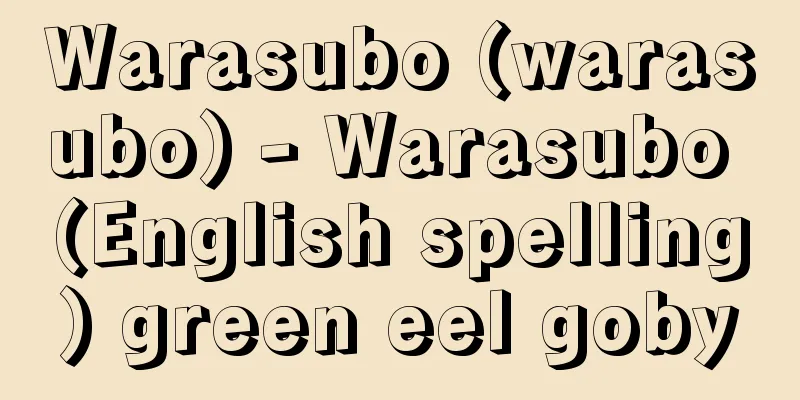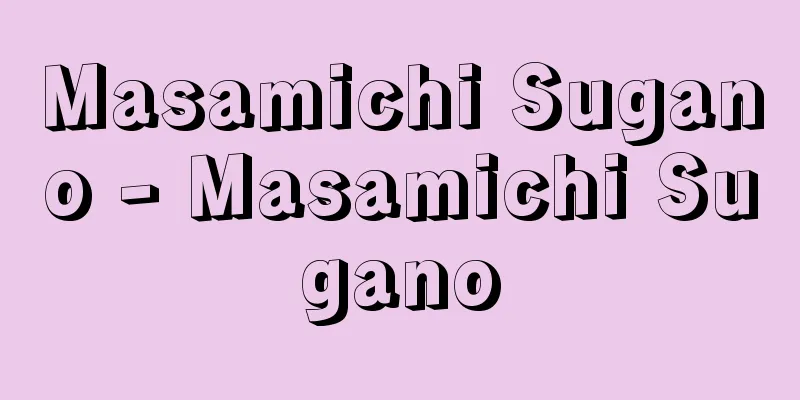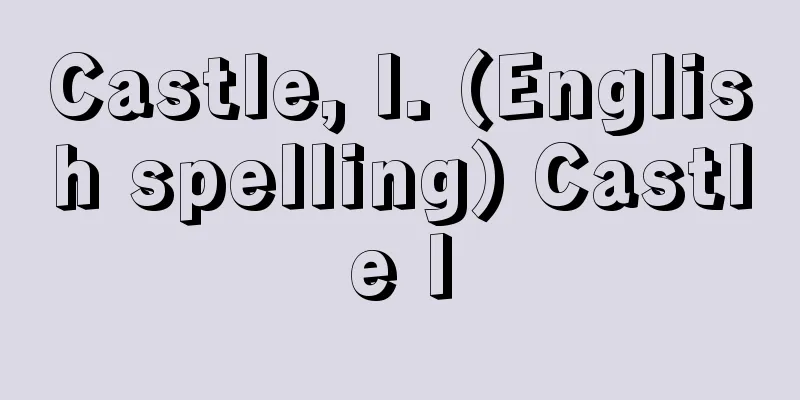Return to the Castle - Genjoraku

|
The name of a Gagaku piece. It is also called "Genjagaku" or "Kankyougaku." It is a piece of music from the Tang Dynasty, in the Taishiki style, and is a running dance performed by a single dancer in a different costume. The dancer wears a strange mask with a bump between the eyebrows, makes a sword seal hand with the left hand, and holds a red drumstick in the right hand. It is a rare piece that features both left-handed (Tang music) and right-handed (Koma music) dances in the same piece; the former is danced to an alternating beat of 2 and 4 beats (tada beat), and the latter to an alternating beat of 2 and 3 beats (yatara beat). The whole piece is made up of five parts: (1) Shingaku Ranjo, (2) Ryoo Ranjo, (3) Kanjogaku Netori, (4) Tokyoku, and (5) Ama Ranjo. Ryoo Ranjo has a famous dance in which a person called a "snake bearer" places a wooden snake on the stage, and when a dancer finds it, he jumps up. In Tokyoku, the dancer holds the snake in his left hand and performs a heroic dance. One theory is that the dance depicts the joy of barbarians (Hu people) living in the Western Regions of China who found their favorite food, snakes. There is an ancient legend in the Jorakue (February 15th) at Kofuku-ji Temple in Nara. The pair dances include "Batou" and others. [Yoko Hashimoto] [Reference] | | Kofuku- |Wearing a mysterious mask, he makes a mudra with his left hand and holds a red musical instrument in his right hand. "Bugaku-zu" by Chiharu Takashima, published in 1828 (Bunsei 11), owned by the National Diet Library . Returning to the castle Source: Shogakukan Encyclopedia Nipponica About Encyclopedia Nipponica Information | Legend |
|
雅楽の曲名。『見蛇(げんじゃ)楽』『還京楽』ともいう。唐楽曲、太食(たいしき)調、舞人1人による走舞で別装束。眉間(みけん)にこぶのある怪奇な面をつけ、左手は剣印という印を結び、右手には赤い桴(ばち)を持つ。同一楽曲で左方(唐楽)、右方(高麗(こま)楽)両方の舞がある珍しい曲で、前者は2拍と4拍の交互拍子(只(ただ)拍子)、後者は2拍と3拍の交互拍子(夜多羅(やたら)拍子)で舞う。全体は、(1)新楽乱声(しんがくらんじょう)、(2)陵王乱序、(3)還城楽音取(ねとり)、(4)当曲、(5)案摩(あま)乱声の5部分よりなり、陵王乱序には「蛇持ち」と称する人が舞台に木製の蛇を置き、これをみつけた舞人が飛び上がる有名な振(ふり)がある。当曲ではこの蛇を左手に持ち勇壮な舞を披露する。一説に、中国西域(せいいき)に住む野蛮人(胡(こ)人)が好物の蛇をみつけて喜ぶようすを舞にしたといわれる。奈良・興福寺の常楽会(2月15日)に古伝承がある。番舞(つがいまい)は『抜頭(ばとう)』など。 [橋本曜子] [参照項目] | | |怪奇な面をつけ、左手は印を結び、右手には赤い桴を持つ。高島千春画『舞楽図』 1828年(文政11)刊国立国会図書館所蔵"> 還城楽の図 出典 小学館 日本大百科全書(ニッポニカ)日本大百科全書(ニッポニカ)について 情報 | 凡例 |
>>: Wise and Saint Shoji Screen
Recommend
Heinroth, JCA (English spelling) HeinrothJCA
…It is also called psychosomatic medicine. The fa...
Brachionus calyciflorus (Brachionus calyciflorus)
A rotifer of the family Brachionidae in the class ...
Currency Note
Please see the Emergency Currency page. Source: E...
Sutra meeting - Kyoe
〘 noun 〙 A Buddhist ceremony to offer all the sutr...
Wuchang
Wuhan City is the capital of Hubei Province in ce...
Tenjiku cotton
It is also called Tenjiku for short. It is said t...
Karimiya
…It was also written as Tonmiya and was called Ka...
Activated carbon fiber
…There are also high elastic modulus, low elongat...
Bancroft, R.
…The English Reformation followed a different pat...
hypsochromic series
...Adding on the findings from the past, the foll...
Orimono - vaginal discharge
...a person with visual impairment. The word &quo...
Jimugurigaeru - Jimugurigaeru
A frog of the family Hylidae in the order Anura i...
Iron shooting stick - Kanasaibo
〘Noun〙 The name of a weapon. It was a thick iron r...
natural philosopher
...Thus, it became possible to systematically tra...
Kipling, (Joseph) Rudyard
Born: December 30, 1865 in Bombay [Died] January 1...









